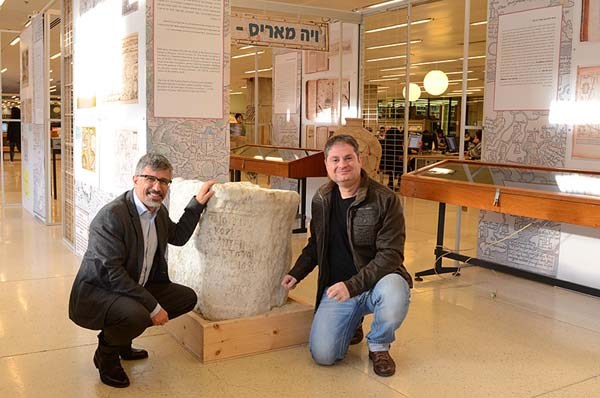
PHOTO: jewishpress.com
TEL DOR, ISRAEL – Researchers with the University of Haifa have made an incredible underwater discovery: an unique Roman inscription on a stone buried off of Israel’s Mediterranean coast.
“For the first time, we can state with certainty the name of the Roman prefect of Judea during the critical period leading up to the Bar Kokhba revolt,” – Professor Assaf Yasur-Landau.
The Bar Kokhba was the last of three major Jewish-Roman wars in the 100s AD. It’s better known as the Third Jewish-Roman War, or the Third Jewish Revolt.
During the 1st and 2nd centuries AD, there was immense tension between the Jewish population of Judea, and the Roman occupation of the area. Rome had established a strong presence there. Caesar was demanding high taxes and forcing changes in the administrative life and economy of Ancient Israel. Less and less Jews were allowed to own land, and instead they became sharecroppers on Roman estates that they used to own. The Romans had destroyed the Jewish temple, and soon there was a surge in Jewish nationalism.
Radical groups, called the Sicarii and Zealots, were staging acts of terror against Romans and Roman sympathizers around Judea. The Bar Kokhba revolt erupted out of all of this tension, fought between Jewish leaders and the Roman occupation. The rebels took the Romans by surprise and used guerrilla tactics to fight the better trained and equipped Roman legions.
Eventually, after several battles, the Romans managed to squash the rebellion. They executed eight members of the Sanhedrin (Jewish ruling religious council) after extensively, brutally torturing them. After, the Roman legions went around Judea, seeking out rebel refugees and burning Jewish towns. Over 580,000 Jews were killed, and over 50 fortified towns and almost 1,000 villages were razed to the ground. Judea would never be the same again.
Until now, nobody knew who the Roman prefect of Judea was during the time leading up to the Third Jewish Revolt. This new discovery has finally answered that question. The stone names Gargilius Antiques as the prefect of Judea.
The area of Tel Dor was an active Biblical community. Archaeology at the area has already yielded a wealth of artifacts, including anchors and pottery. The massive rectangular stone was discovered just off the coast, within the Dor Nature Reserve.
The stone measures 33.46 inches high and weighs more than a thousand pounds. It has a seven-line inscription in Greek, one of the common languages of the Roman Empire at that time. The researchers are dubbing it the longest inscription ever discovered underwater in the country of Israel.
70 years ago, another inscription was discovered with Antiquies’ name. A debate soon followed as to whether or not Antiquies was the prefect of Syria, or Judea. This second stone confirms the latter.
“Together with the inscription that was found around the time the State of Israel was established, we have here two sculptures honoring and lauding the prefect Antiques. The question is – why? Do these inscriptions mark two different significant events, or was it usual practice to erect a new sculpture for the patron of the city without any special reason?” – Researchers at Tel Dor, working with Haifa University.
Dr. Gil Gambash, head of the Marine Civilizations Department at University of Haifa and Professor Assaf Yasur-Landau are joining forces with a team of researchers at University of Haifa to fully decipher and interpret the inscription in its historical context. Once the task is finished, they’ll know more about why the stone was carved and what it was for.
The inscription was revealed to the public as part of an exhibit at the University of Haifa, on Wednesday, November 30th.

